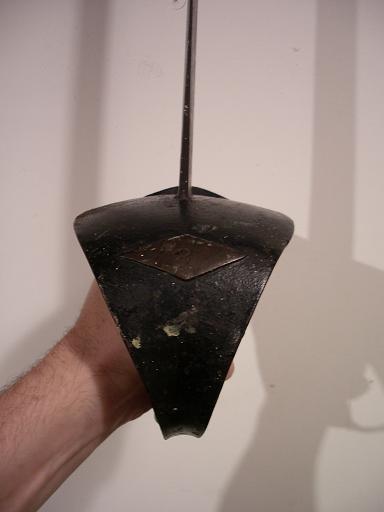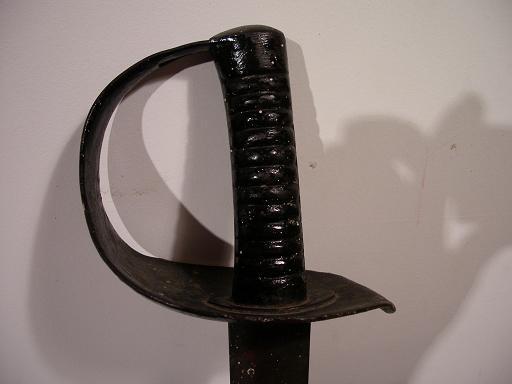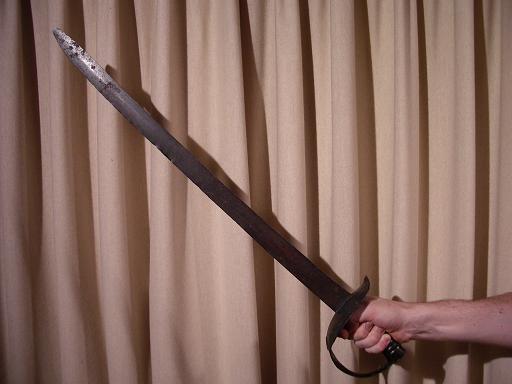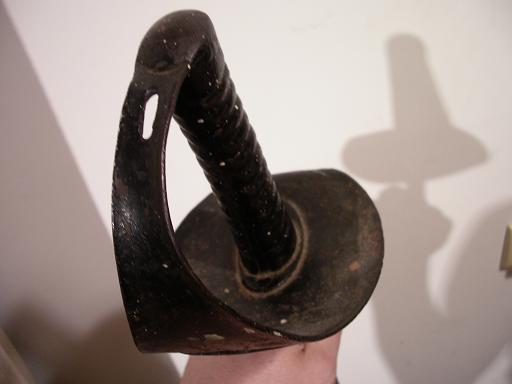I was wondering if someone could help me identify this sword. I like to think of it as a pirate sword, and my 6 year old daughter likes this idea too. I searched for it on oldswords.com once and found a similar one which was, if my memory serves me correctly, a british naval cutlass from the 1860s. This piece has a brass plaque with the number 2 on the guard which did not appear on the one shown on oldswords. It has a 660mm (26") blade with a false edge for about a third of it. It is well balanced and very comfortable to hold, with a nice distal taper.
If anyone can explain to me why this sword would be numbered or any other details regarding this type of blade I would be most appreciative (and so would she).
Darren.




